The World's Best Flea Market is Just Outside of Paris, and You Need to Check It Out
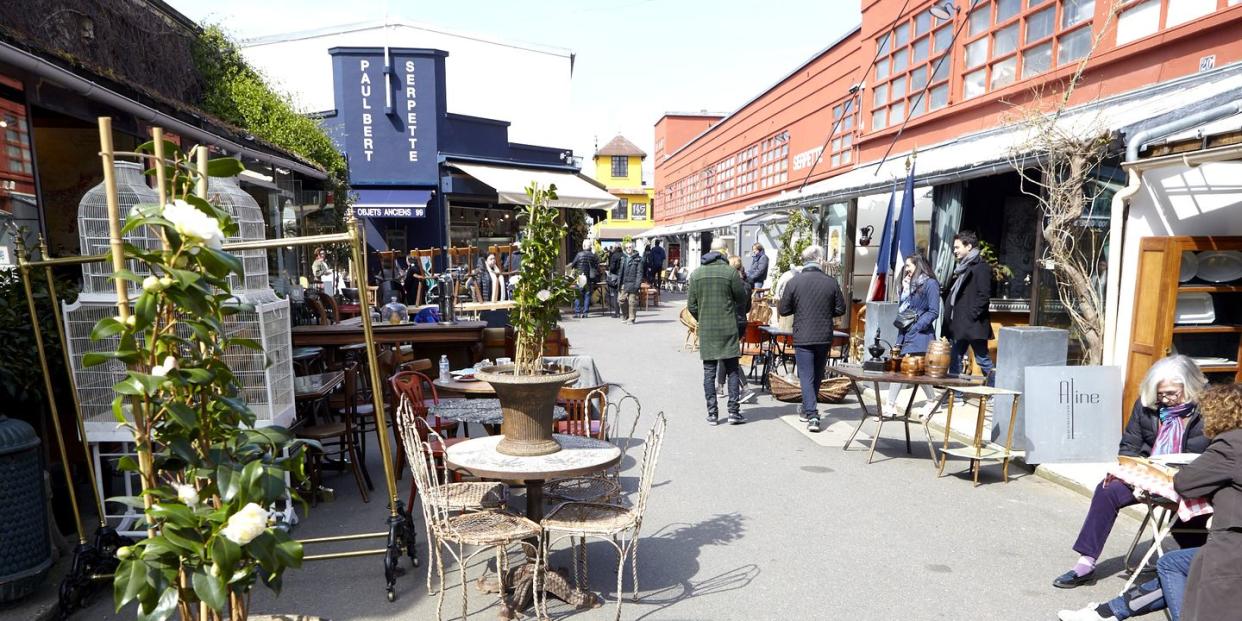
“Hearst Magazines and Verizon Media may earn commission or revenue on some items through the links below.”
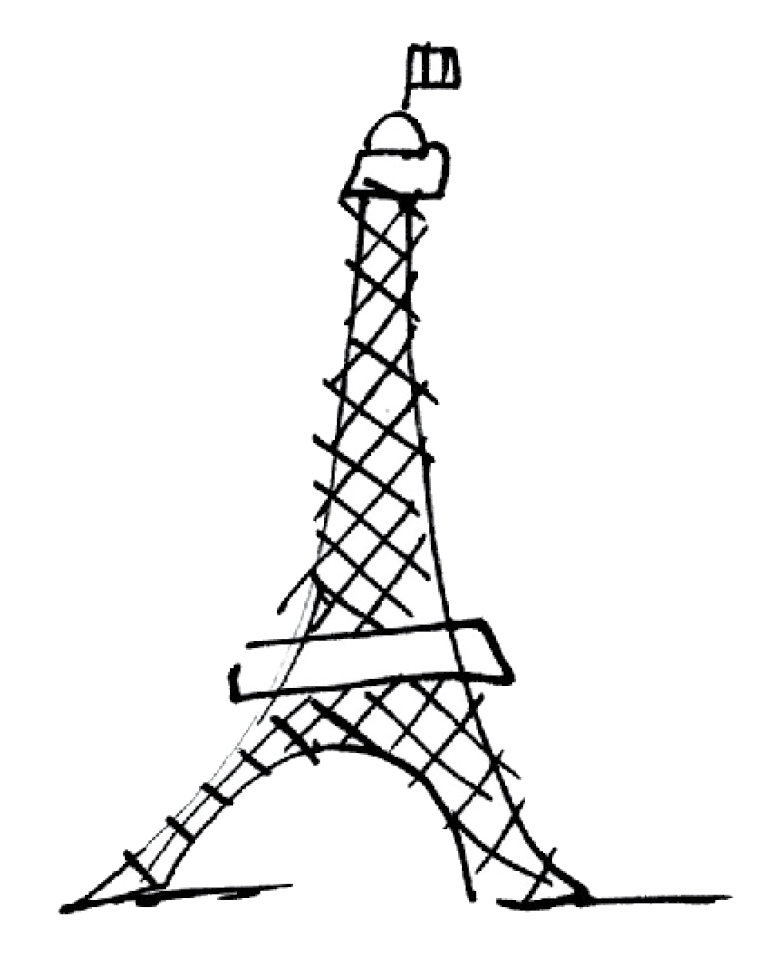
If you’re planning a trip to Paris—or, more likely, are in need of an excuse to get one on the calendar—we’ve got an important pit stop to add to your itinerary: The Paris Flea Market. Also known as Marché Clignancourt or, more formally, Les Puces de Saint-Ouen, “the Paris flea market is the best of the best! All the vendors have such a flair for design—their vignettes are even carefully curated,” says interior designer Garrow Kedigian, whose Parisian mother inspired him to start shopping there as a preteen (his first purchase? A bronze bust).
Marché Clignancourt spans 7 hectares—meaning it takes up as much space as about 13 football fields placed side-by-side—making it so massive, it's hard to know where to begin. There's stall after stall after stall of inspiring vintage and antique furnishings, so we tagged along with Kedigian to learn how to navigate the market like a true pro. Here's every major question you could have, answered.
Where to Find All of the Markets at the Paris Flea.
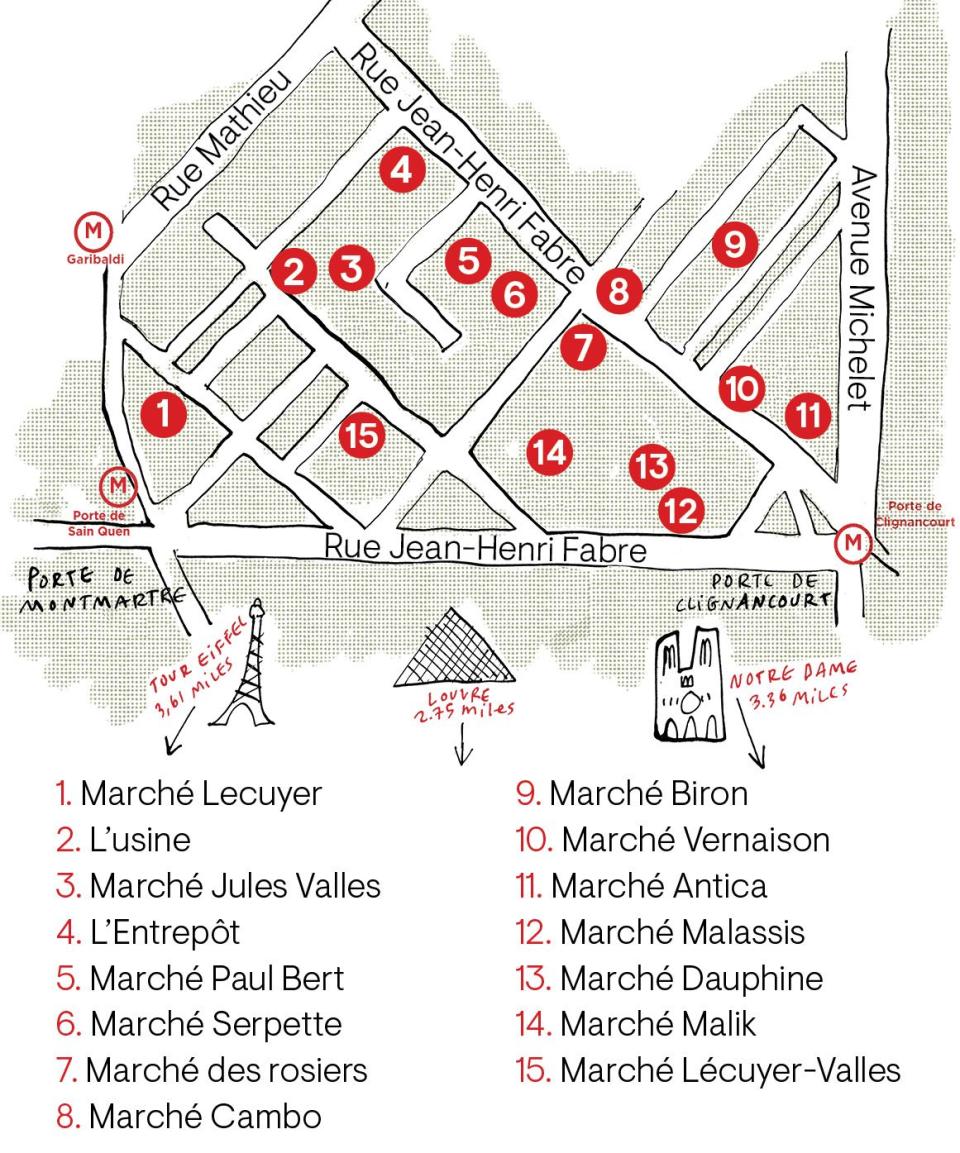
What kinds of things will I find there?
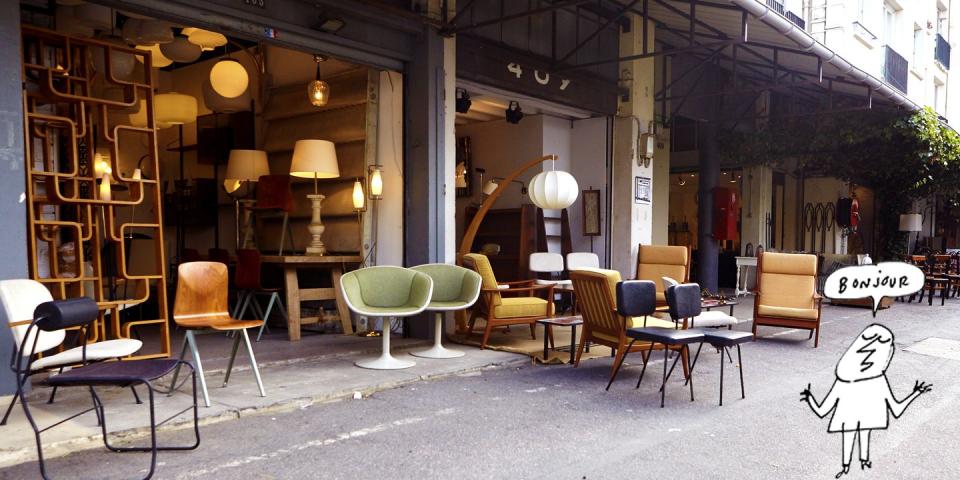
Every category and style seems to be represented. Maybe you’re starting a house from scratch—interested in some original parquet de Versailles wood flooring salvaged from a local manse? Or perhaps something to shake up your traditional decor scheme. Designer Sasha Bikoff prowls the Paris flea market for '60s space-age accents, like egg chairs and flowerpot lamps.
And it’s not just a place for name-dropping: You’re just as likely to spot a rare vintage Vernor Panton for IKEA Vilbert chair as you are an absolutely to-die-for rustic wood set that some vendor scooped up from a random farmhouse in the country.
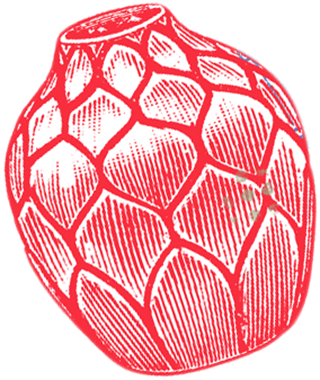
Besides furniture, there's art and accessories galore, plus small delightful things like silver, schnauzer-shaped cutlery stands to prop up your knife after buttering toast with it (so the buttery crumbs don’t land on your napkin/the table, obvi).
Dying yet? The whole scene is pretty intoxicating, even if you don’t have a shopping agenda: open-air stalls stocked to the brim, sharp-eyed vendors hovering nearby ready to regale you with a brief history of anything you take interest in, every type of shopper milling about and daydreaming. Dare we say you’ll find a great Instagram moment.

Why’s Paris Flea such a big deal?
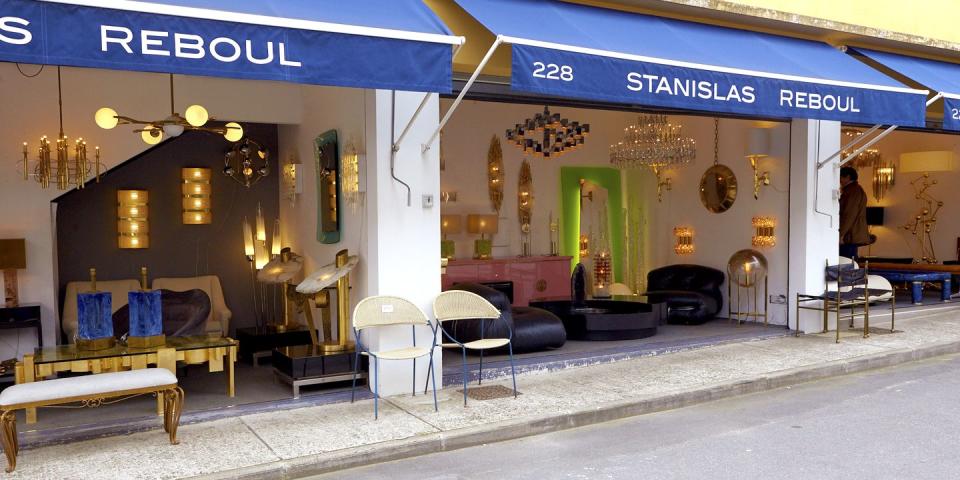
We’re hardly the first to go nuts over Les Puces; designers and design-lovers have been snatching up pre-loved housewares there for nearly 200 years. As the story goes, when the urban planner Georges-Eugène Haussmann started paving Paris with its grand boulevards and replacing its slums with those now-trademark stone facades with sloped roofs, a lot of secondhand dealers got the boot from their shops. They were consolidated and relocated to a spot just north of Paris near the Porte de Clignancourt, where a series of stalls were first erected in 1860.
Whether the French name for flea markets, marches aux puces, was inspired by the fleas that infested the dingy upholstery back in Haussmann’s day or the fact that the merchants had been exiled from the city (the “flee” market) is still up for debate. But the fact of the matter is that the market is no longer a collection of castaway merchants but rather one of the most esteemed addresses for antiques dealers to hawk their wares.
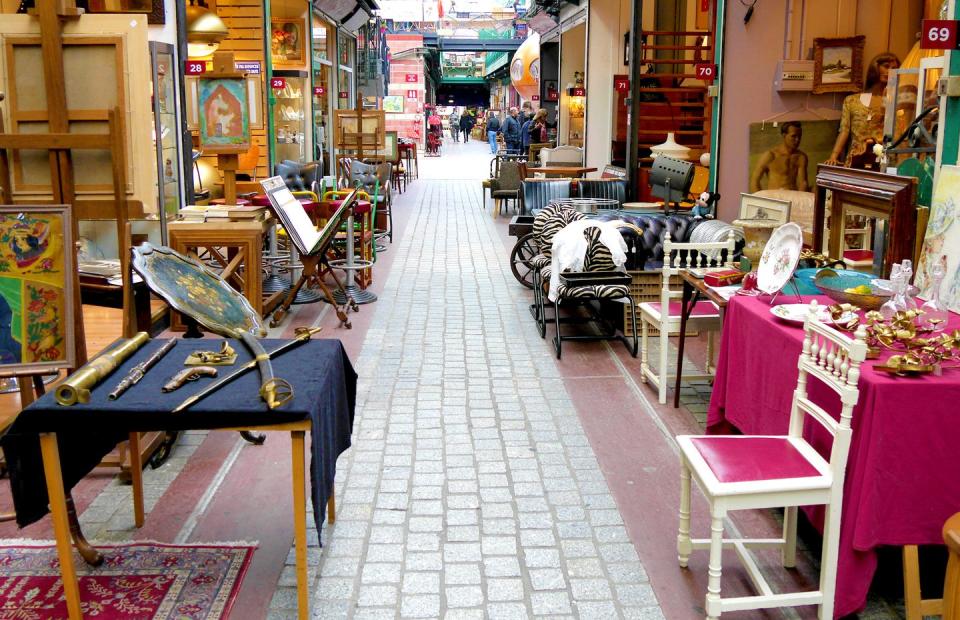
Nowadays, there are a number of markets within the greater Clignancourt area. “They’re all wonderful and have their own specific, tailored objects,” says Kedigian. A quick peek at Google Maps will show you where they’re all located, in short walking distance from one another.
Kedigian also follows some vendors on Instagram—like Stanislas Reboul, Elsa Halfen, and La Galerie Sebban—just to keep tabs on what they get in stock.
What should I bring? How do I prep for this trip?
This should go without saying, but when you plan a trip to Paris (or any country where you don’t know the language), it’s wise to brush up on a few local phrases. You don’t have to speak fluent French to shop at the flea market, as pretty much all the vendors speak English, but simple salutations will go a long way when making friends:
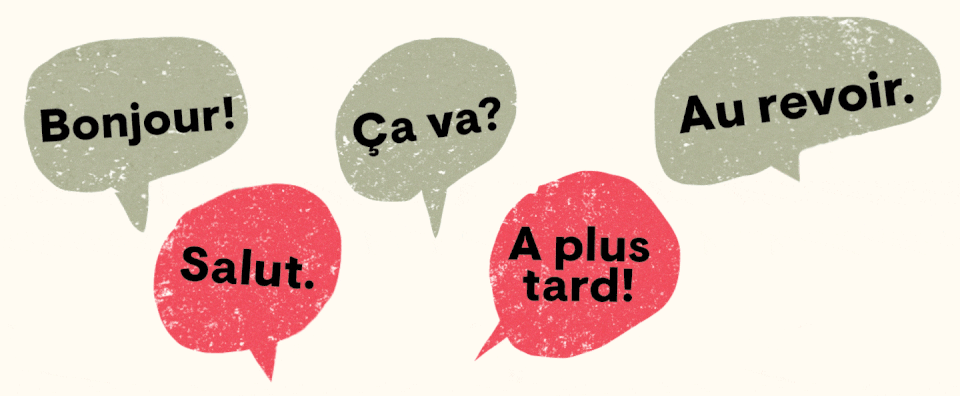
Plus, a few things to ask:

What should I pack?
Comfortable shoes and a tape measure are pretty much essential, and then you’ll also want to bring along any dimensions that will help you when you’re shopping. More is always better—even if you don’t need to buy anything, you’d still be wise to bring a floor plan with measurements of your whole house—because what if you find the perfect dresser for your bedroom but aren’t positive if it will fit? (Actually, if that happens, take the vendor’s card and measure when you get home; you can likely purchase remotely and have it shipped without too much trouble.)
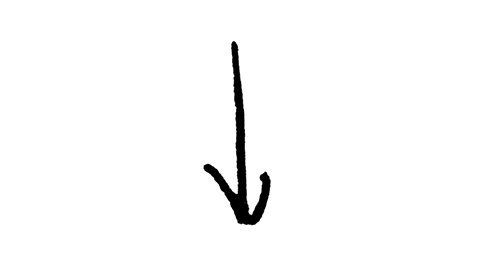

When’s the best time to go?
One of the best things about the Paris flea market is that it’s open year-round, every weekend, rain or shine. Besides simplifying everything, this also means that it’s not absolutely swamped with people competing over purchases. If you’ve ever been to a big stateside flea market that happens just a few times a year—and sat in traffic on the way there—you know what we mean!
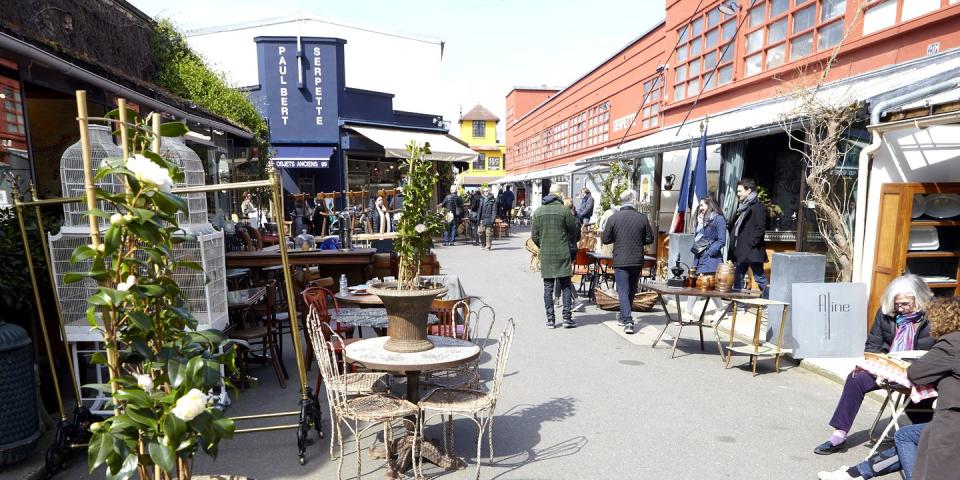
There are, however, some smart times to go:
The Paris flea market is technically open two days a week: Saturday and Sunday. But many vendors open on Friday to preview their pieces for the weekend, and some are open on Monday, in case you forgot to get something you want. So if you can’t make it on the actual weekend, those days are still worth attending.
In general, the vendors open a bit later than they would at American flea markets. Morning is still best. “I like to come early, around 9, 9:30 in the morning, because it’s not a mob scene yet,” Kedigian says. “I think you’ll find that afternoon, that’s when it becomes a little bit more crowded, when the locals come.”
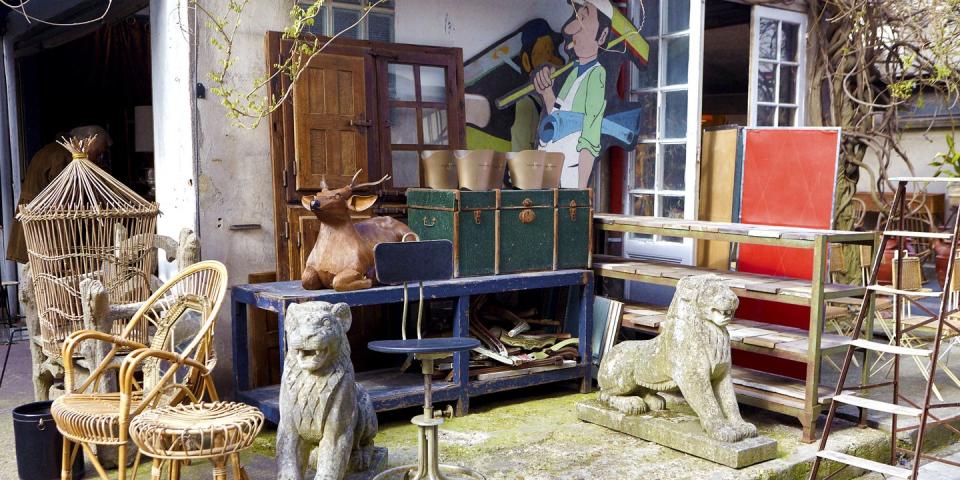
You said outside of Paris, right? How do I get there?
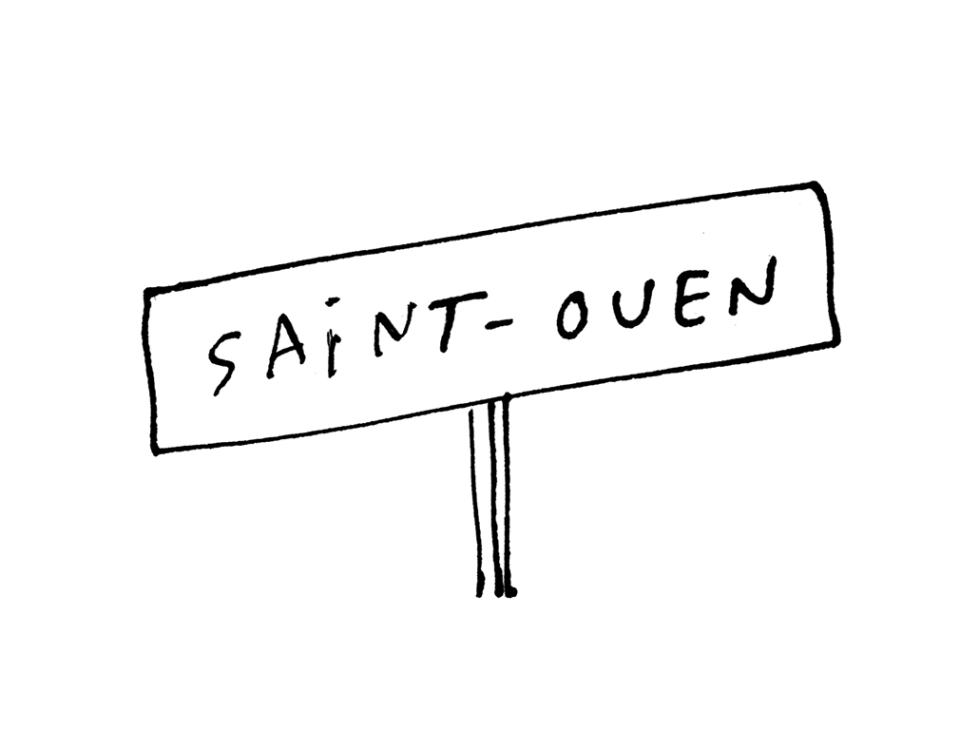
If you’re comfortable taking the metro, that’s an option. The market is located in the 18th Arrondissement, near the station Porte de Clignancourt. The only catch is that it’s a bit of a confusing walk from the metro to the actual flea market proper...in a neighborhood with a reputation for pickpockets. So if there were a time to take a taxi or book a Lyft or Uber, this would be it.
Have the driver drop you off at the entrance to the Paul Bert and Serpette markets, which is at 110 Rue de Rosiers in Saint Ouen. If you don’t say that last bit, pronounced “san-wan,” they’ll take you to Rue de Rosiers in Paris, which is in a lovely street in the Marais neighborhood with excellent Jewish restaurants but, sadly, not the flea market. There are actually a lot of flea markets in Paris besides this one, so you want to be very specific about your destination.

How do I pay for things?
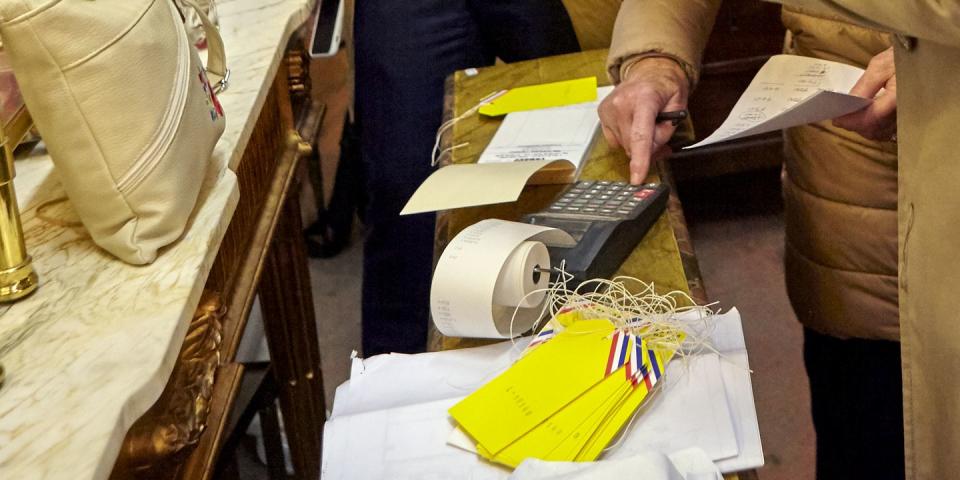
Having some cash on hand is not a bad idea if you want to pick up inexpensive trinkets, but it’s not necessary: Most vendors will take credit cards. There is an ATM—just one—outside the Dauphine market in case of crisis.
But better yet, there's a sophisticated shipping system that you’ll want to know about if you plan to make a big purchase (or a bunch of them). There are a few companies on site at Paul Bert/Serpette, but one of the best-loved is Camard. Right when you arrive at the flea, beeline there to pick up a “carnet” (a little notebook of carbon-copy receipts) and stickers and tags with your official shipping number on them.
Then, shop away. Once you’ve agreed on a selection of purchases from a vendor, you’ll jot down the products and prices in the carnet, leave them a copy, and then sticker or tag the items you’re taking home. No money is actually exchanged at this point! The shipper will arrange for it all to be delivered to you, and you’ll pay for the lot when you get home.
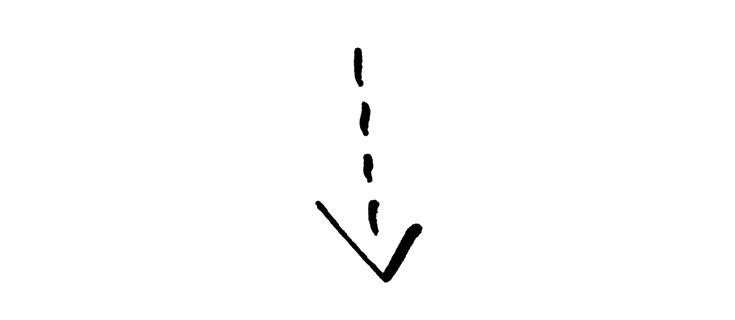
Is it possible to get a deal?
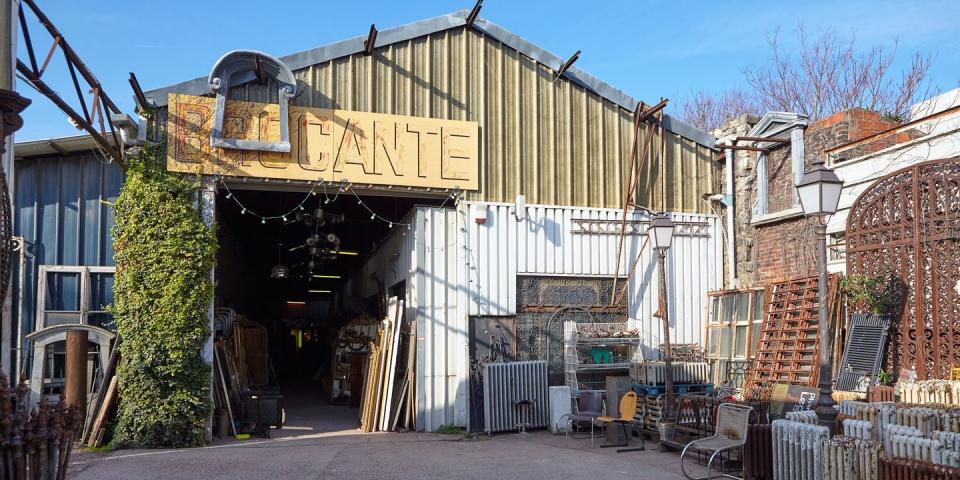
While the prices at the flea market are remarkably low compared to, say, getting the same item from a dealer or boutique shop back home, you’re still looking at hundreds or thousands for big, well-preserved, beautiful pieces from bygone times. (Understandable, really.) But there’s a lot you can do to get a better price.
Haggling is perfectly acceptable at the Paris flea, and Kedigian has a strategy, which you can learn in-depth here. Take notes—it's worth it.

Make the Most of Your Trip to the Paris Flea:

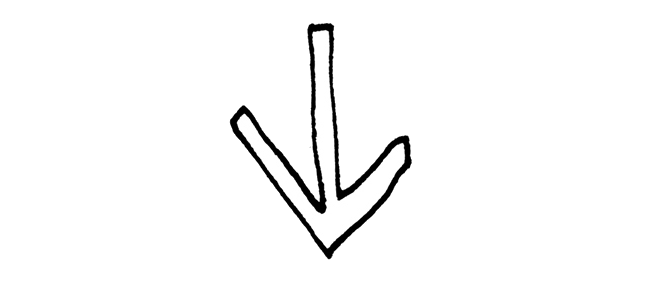
Should I bring a backpack full of croissants?
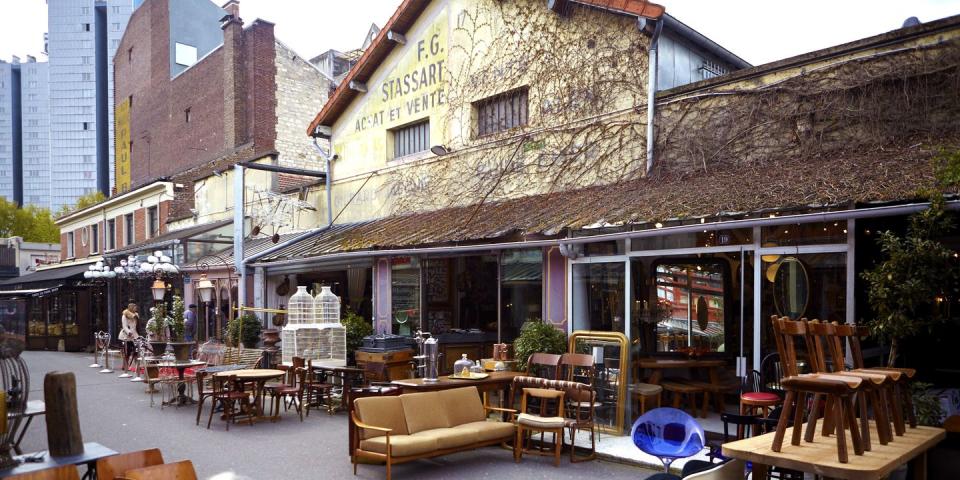
I mean, that’s never a bad idea, but there are a few great restaurants right at the market if you want to take a break from shopping for an espresso, snack, or lunch. Ma Cocotte is probably the fanciest, located right at the entrance to Paul Bert and Serpette, but there’s also Le P’Tit Landais, La Péricole, Le Petit Navire, and more.
Sitting down to a proper meal—and glass of vin—is a great idea in the middle of your shopping day. Break out your photos and floor plans and discuss: What can’t you stop thinking about? What do you think is probably too expensive? How much are you ultimately going to spend?
Sometimes Kedigian will even take the night to think on things and get organized (in more than a dozen trips, he's only had items bought out from under him twice). How to make a decision? As he puts it, “Buy things you connect with, things that work.” Well, that makes it sound simple enough, right?
The only thing left to do now is book your flight.
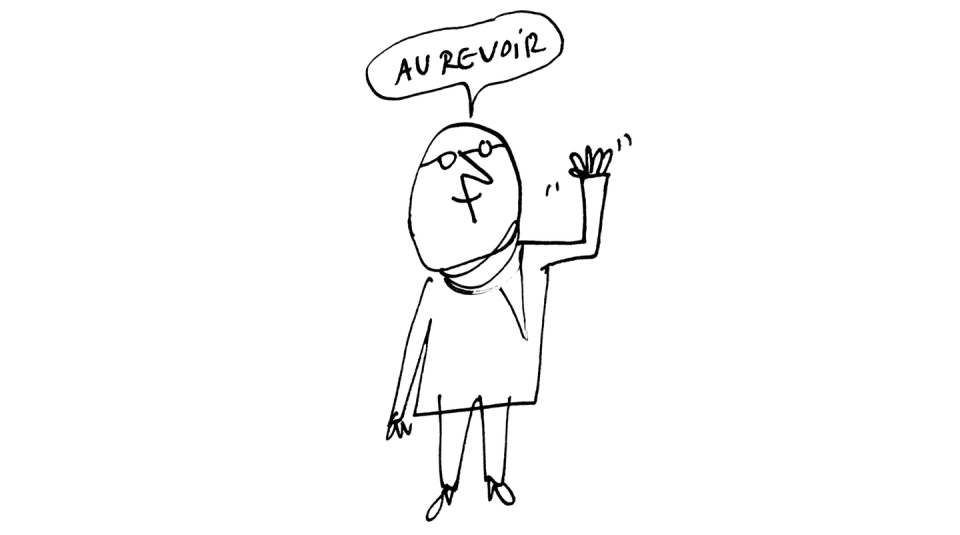
Follow House Beautiful on Instagram.
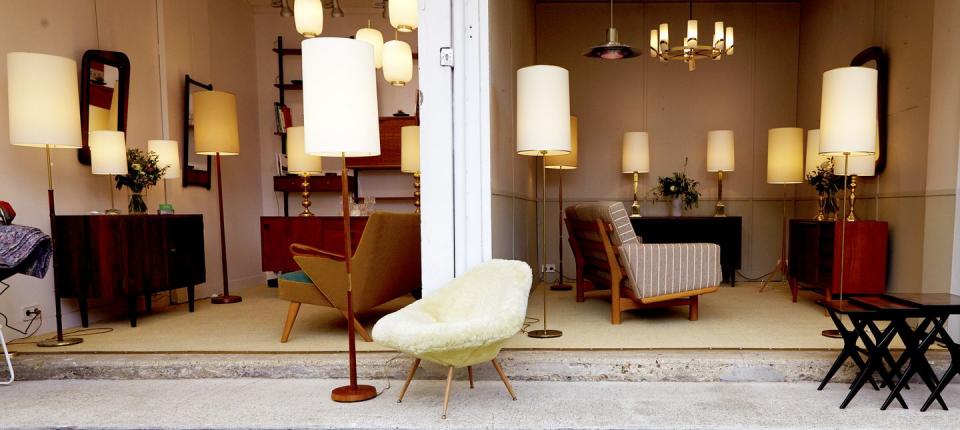
You Might Also Like

